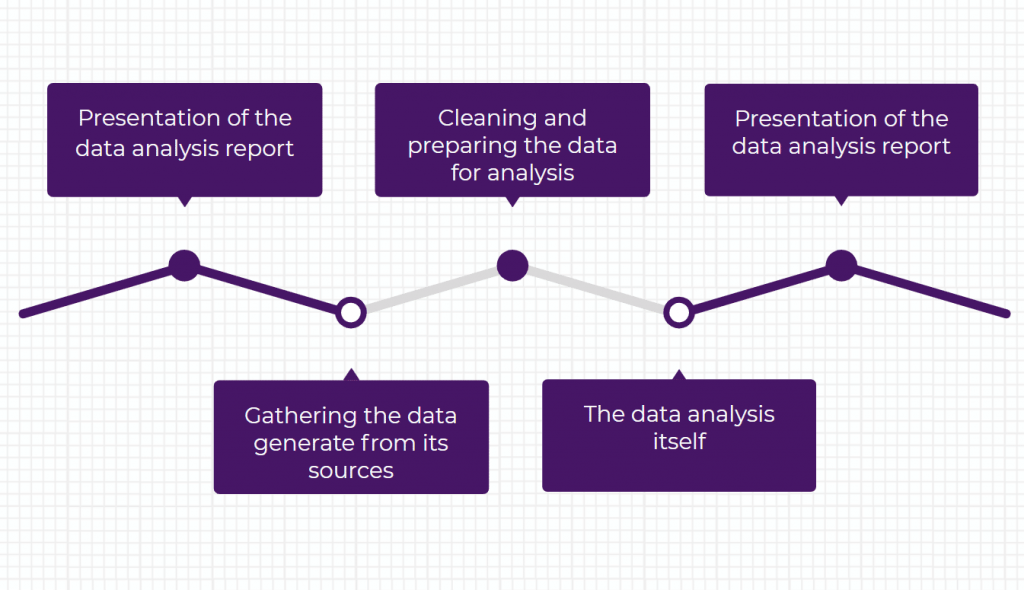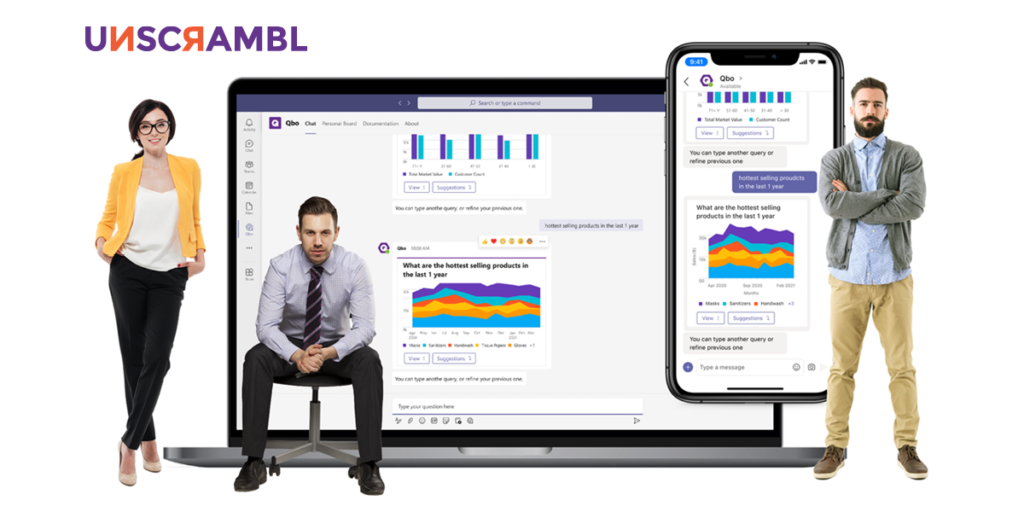 6 Minutes
6 Minutes

What Is Augmented Analytics & How Can It Help Your Business
As business intelligence (BI) tools evolve thanks to artificial intelligence, we are fast entering the age of Augmented Analytics where businesses can effectively usher in an era of easy data-driven decision making.
According to Gartner, augmented analytics is the use of technologies such as machine learning, artificial intelligence, and natural language processing to help in the preparation and analysis of data.
This helps in the generation of insight for users of business intelligence and analytics platforms – allowing greater interpretation of an organization’s data for better decision making. In this article, we’ll be going through the challenges of utilizing data today, how augmented analytics works, and how it can effectively transform your organization through the power of better data-driven decisions.
Data Is the New Currency – Only When It Can Be Effectively Utilized
Many businesses understand what business intelligence is and many organizations are starting to embrace the use of analytical tools to help better understand their data.
But with 87% of organizations having low BI maturity and a BI adoption rate of only 30% across all employees, the full benefits of data analytics aren’t exactly being maximized.
While using BI self-service tools definitely allows for easy visualization of the data through colorful and customizable dashboards, that doesn’t mean business leaders can draw accurate insight from the information being presented.
Correlation doesn’t imply causation and superficial inferences of data won’t mean much.
Let’s say your data shows your revenue rising by 25% over the last quarter, how would you capitalize on this information?
Does the rise come from your existing customers spending more?
Or perhaps it is from new customers attributed to a new marketing campaign launched a few months back?
Without augmented analytics, all the analysis will have to come from the user himself – which brings us to another big challenge.
Understanding Data Isn’t Easy & You’ll Need a Team of Data Experts to Make It Happen
Much like how crude oil is refined into more useful derivatives such as kerosene and diesel, data also needs to go through a process of refinement to be useful to decision-makers.
This process involves:
- Defining the data requirement specifications
- Gathering the data generate from its sources
- Cleaning and preparing the data for analysis
- The data analysis itself
- Presentation of the data analysis report (through visualizations, such as tables and charts)
Using these analysis reports, business leaders will then have to frame the results in the right business context and draw insights that are actionable that will make a business impact.
Without augmented analytics, the entire data preparation, processing, and analysis will have to be done by a team of highly trained professionals – data analysts and data scientists.
This brings about costly organizational challenges that hinder the adoption or even prevent the use of business intelligence tools.
1. Data Analysts & Data Scientists Are Expensive to Train & Hire
The average salary of a data scientist starts at $95,000 for an entry-level hire and can go as high as $250,000 holding a managerial position.
This makes it near impossible for smaller to mid-size businesses to fully leverage the power of their data.
2. Self-service BI Only Tools Helps Analyst Do Their Jobs Better – It Doesn’t Conduct Analysis
A big misconception is that self-service BI tools provide insights to business leaders and by itself, leads to better decision making.
In truth, it provides beautiful and customizable interfaces for data analysts and scientists to conduct their analysis and present to stakeholders in visualizations that are easier to understand.
3. There Will Be a Drain on Your It Resources & Delays Will Be Commonplace
Data analysts aren’t business experts and business leaders in your organization, especially those in the frontlines, probably aren’t IT experts either.
If a business leader wants to draw insights from the company’s data, they will have to send a request to their data analytics team to prepare and analyze the data.
The analytics team will then have to present the findings to the business leader, making the entire process rather draining for both the analysts and decision-makers.
In fact, the insights obtained might be outdated resulting in lost opportunities due to administrative lag-times.
There must be a better way!
Augmented Analytics Helps Make Business Intelligence Easier & More Intuitive
Augmented analytics focuses on delivering insights to decision-makers, helping analytics teams with the heavy lifting of data preparation, processing, and analysis.
This is due to its three main components:
1. Machine Learning
Every dataset is different and the way every organization arranges their data is unique.
Machine learning, which is a subset of artificial intelligence, allows algorithms to effectively learn and adapt as they process and analyze your organization’s data.
The more the algorithm processes and analyzes your data, the faster and more accurate they get at interpreting them – just like how an expert in any field or discipline benefits from their compounding knowledge of a subject.
2. Natural Language Processing
Just imagine a scenario where you can communicate with your data as you would with another human being – by asking questions – and be answered back in a way that you can easily understand.
Natural language processing translates the analysis and insights done by a machine into phrases and plain language that any human being can understand.
This flattens the learning curve and greatly allows for increased adoption of business intelligence throughout an organization.
3. Automated Insights
Augmented analytics allows for the complex processing and analysis of data to happen within seconds
Unlike a human analyst, the algorithms can handle highly repetitive tasks, analyzing huge amounts of datasets with an accuracy level that only gets better and faster as time goes on.
Business leaders will be able to enjoy alerts and automatic insight generation that will allow them to have a holistic view of their business operations.
Augmented Analytics allows for better and faster decision-making at scale – regardless of how big an organization (and their data generation) grows.
This allows organizations to reduce their reliance on their IT departments and deploy them to handle more productive and higher-level tasks such as working with business leaders to define business strategy and KPIs.
Through augmented analytics, users and business leaders throughout an organization can effectively use business intelligence to make an impact in their own field of expertise.
Augmented Analytics Helps Transform Operations Throughout an Organization
Because of its ability to be used easily by both data experts and non-technical executives, augmented analytics can be effectively adopted throughout a company.
This allows for widespread use across various key departments that every business can benefit from.
1. Augmented Analytics Helps Businesses Lower Cost & Improve Operating Margins
Every business has inefficiencies.
From hospitals overstocking their medical inventories to retail brands ineffectively deploying their retail staff across their stores, augmented analytics allow decision-makers to gain immediate insight into their data.
Business leaders can ask specific questions pertaining to their business KPIs such as:
“Which of my products are selling the least across all my retail stores in the last 12 months?”
“Which of my outlets are bringing in the least revenue but has the highest operating cost?”
Through augmented analytics, companies can immediately identify key areas in their business that need optimization to improve their operating margins.
2. Augmented Analytics Helps Marketers Better Reach & Convert Their Prospects
A huge amount of data is generated in a company’s marketing activities and campaigns.
With augmented analytics, customer behavior can be analyzed better. Through the power of conversational analytics, marketing managers can ask questions and get straight to insights that will help optimize their marketing efforts.
Need to understand where your highest paying customers are coming from?
Simply ask “Which of my marketing channels are bringing in the highest revenue per conversion over the last 12 months?”
Looking to discover the best cost-effective marketing channel to focus on?
Just ask “Which of my marketing channels has the lowest cost per acquisition over the last three months?”
Augmented Analytics will do all the heavy lifting and connect various data sets across your organizations, from sales to conversion rates to your marketing expenditure, and deliver you the key insight that you want.
Simple and to the point.
3. Augmented Analytics Allows Sales Teams to Shorten Their Sales Cycle
Today, sales is getting more competitive.
Sales cycles are getting longer and sales reps have to juggle a world of responsibilities, from setting appointments and contract discussions to closing the deal.
Utilizing augmented analytics powered BI tool, sales managers can quickly analyze their sales pipeline performance and learn where their shortcomings are.
From top-level questions such as:
“What percent of sales meetings have converted into deals over the last 3 weeks?”
To hyper-specific queries like:
“How long does it take for the slowest sales rep to engage with an inbound enquiry over the last 12 months?”
With augmented analytics, sales cycles can be shortened and sales teams can be optimized and trained to be more efficient in areas that need improvement.
Embrace Augmented Analytics Today & Start Transforming Your Organization
Thanks to augmented analytics, data democratization has become a reality and at Unscrambl, we are proud to be at the forefront of the technology.
Our business intelligence tool, Qbo, is powered by augmented analytics, allowing businesses big and small to leverage the full potential of their data without a steep learning curve.
Through our conversational analytics capabilities, users across your organization can simply ask questions like how they would in a normal conversation and get valuable insights on-demand.
No technical knowledge needed!
Embark on a free 14-days trial with Qbo and see for yourselves how easy and effective augmented analytics can be.





